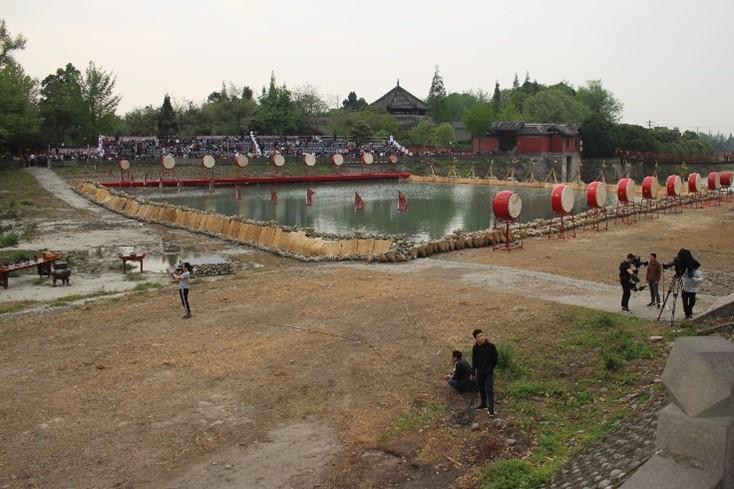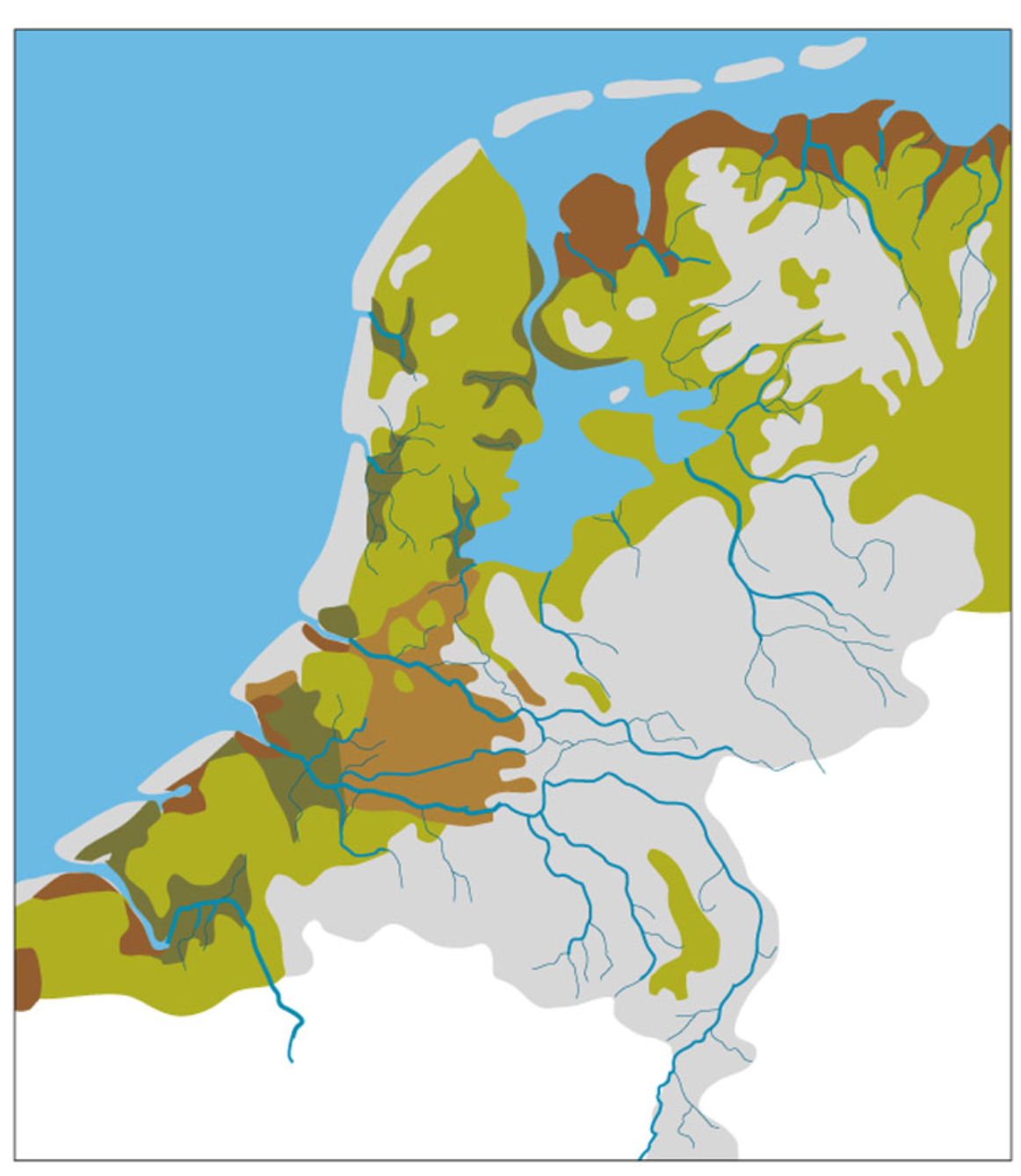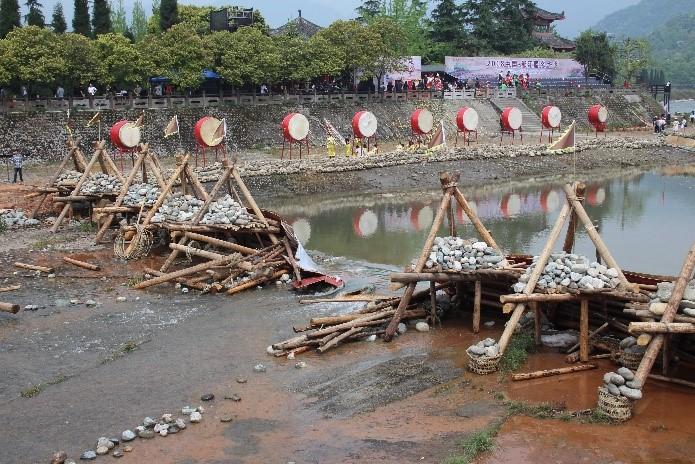Bart Schultz
All over the world, people celebrate water. In our fifth Blue Paper, Bart Schultz (professor emeritus of UNESCO-IHE Institute for Water Education), writes about his experiences in the town of Dujiangyan, China, which celebrated the 2270th anniversary of its irrigation system. He writes of a transnational exchange of knowledge and mutual admiration, but also sees a lesson in the Dujiangyan celebration for Dutch water managers: don’t forget to celebrate water.
The Dujiangyan Irrigation Scheme is one of the oldest irrigation schemes in the world. In 2018, Dujiangyan Municipal People’s Government, Chengdu, China celebrated the 2270th anniversary of this water system with the Dujiangyan Water-Releasing Festival and the Water Culture Forum about the Water Environment Protection and Water Conservancy. I was invited at the occasion of the celebration of the anniversary, to give a presentation on Sustainable Urban Development in the Netherlands in the Cultural Context. Born in Haarlem, starting my career working on water management aspects during the initial development of new-town Almere while living in Lelystad in the large scale land reclamation of the IJsselmeerpolders, this was a topic close to my heart. Fully aware of the importance of water management in China and the interest of my Chinese colleagues in history, I happily accepted this invitation. It always surprised me that my Chinese colleagues are so impressed by Dutch water control and land reclamation projects, especially because I visited several of their own enormous water control projects and schemes.

Dujiangyan is located in the northwestern part of Chengdu Plain, 39 kilometres from the capital city Chengdu. Dujiangyan is the location of Mt. Qingcheng-Dujiangyan, an the cradle land of Taoism religion, gave birth to the extensive and profound Taoism culture, having an influence on the politics, economy and culture of China for over 1800 years. Mt Qingcheng is now a World Cultural Heritage site. Moreover, Dujiangyan houses an important part of the Sichuan Giant Panda Sanctuary, a World Natural Heritage site. Built 2270 years ago, the Dujiangyan Irrigation Scheme directs water for irrigation without a dam, and is the only ancient irrigation scheme that is still functioning well nowadays. The scheme, benefiting the whole western Sichuan plain with an irrigated area of more than 800,000 hectares, is a miracle in world water conservancy culture history.
The Dujiangyan Irrigation Scheme has been a land of abundance for over 2000 years. The annual ritual ceremony of the Qingming Water-Releasing Festival, which has been held since 978, commemorates Li Bing and his son, who led workers to build the Dujiangyan Irrigation Scheme. The Qingming Water-Releasing Festival represents the long developmental process of farming culture in the Chengdu Plain and its folk-custom culture. 2018 marked the 1040th anniversary of the Qingming Water-Releasing Festival. On the first day, the Water Culture Forum about the Water Environment Protection and Water Conservancy was held. Local and international experts of water conservancy technology, representatives of famous colleges and universities, and representatives from international cities well known for water gathered to present and discuss world’s water management problems such as sustainable development of ecological civilization and water environmental protection. The local government wants to develop the annual water release event as an international event with an academic workshop.

During the event, I gave a presentation on the Netherlands, starting with a map of the Netherlands of about thousand years ago. This was the time when our Dutch ancestors started to make polders. Living on artificial mounts had become too complicated: simple drains in the flood prone peat lands did not suffice anymore with sea levels rising. Since then most of the lowland areas in our country have subsided about five metres, while the sea level has raised about one metre, resulting in a country of which two thirds has to be protected against flooding. I paid special attention to the surface level in our cities, where our ancestors were clever enough to build their houses on the higher parts, but where most of the new urban expansions we built about five metres below mean sea level. I explained how we can recognize our water management history in the lay-out of the cities, water management institutions and organisations, people’s attitudes, paintings, names, and sayings. Based on the historical review, I concluded with the points that I consider of crucial importance: that climate change is important, but not the main issue. The main issues are that living and working up to 6.5 metres under mean sea level is not sustainable. We can only do this because of devoted operation and maintenance and timely modernization and upgrading of our water management and flood protection systems. The key question is, however, how long will Dutch society be able to maintain this cultural attitude?

The irrigation season can start
On the second day, I visited the water release festival. This turned out to be an impressive and excellent show, with all kinds of historical performances. Due attention was given to the history and culture of the irrigation system, and of course to the water management itself. At the end of the show, the main water inlet was opened during a ceremony, celebrating the water coming in for the new growing season.
The event made a great impression on me. It got me thinking how we can apply this in other contexts, to recognize and make sense of the water that is present in our daily lives. For the Dutch context, maybe the authorities working with water can devote a special event when in autumn the annual inspection (schouw) starts. It may generate more interest in and credit to the work of our Water Authorities, which is so crucial for the existence of our low lying country.”
Acknowledgement
The Blue Papers is a series of thought-provoking short essays on water. Authors have been invited by the platform Water Values: Connecting Past, Present & Future, an initiative of ICOMOS-NL, TU Delft and University of Groningen to argue the importance of heritage and a cultural approach within water related challenges. The papers were edited by PCF’s Carola Hein and Hilde Sennema. Bart Schultz is professor emeritus of UNESCO-IHE Institute for Water Education.
